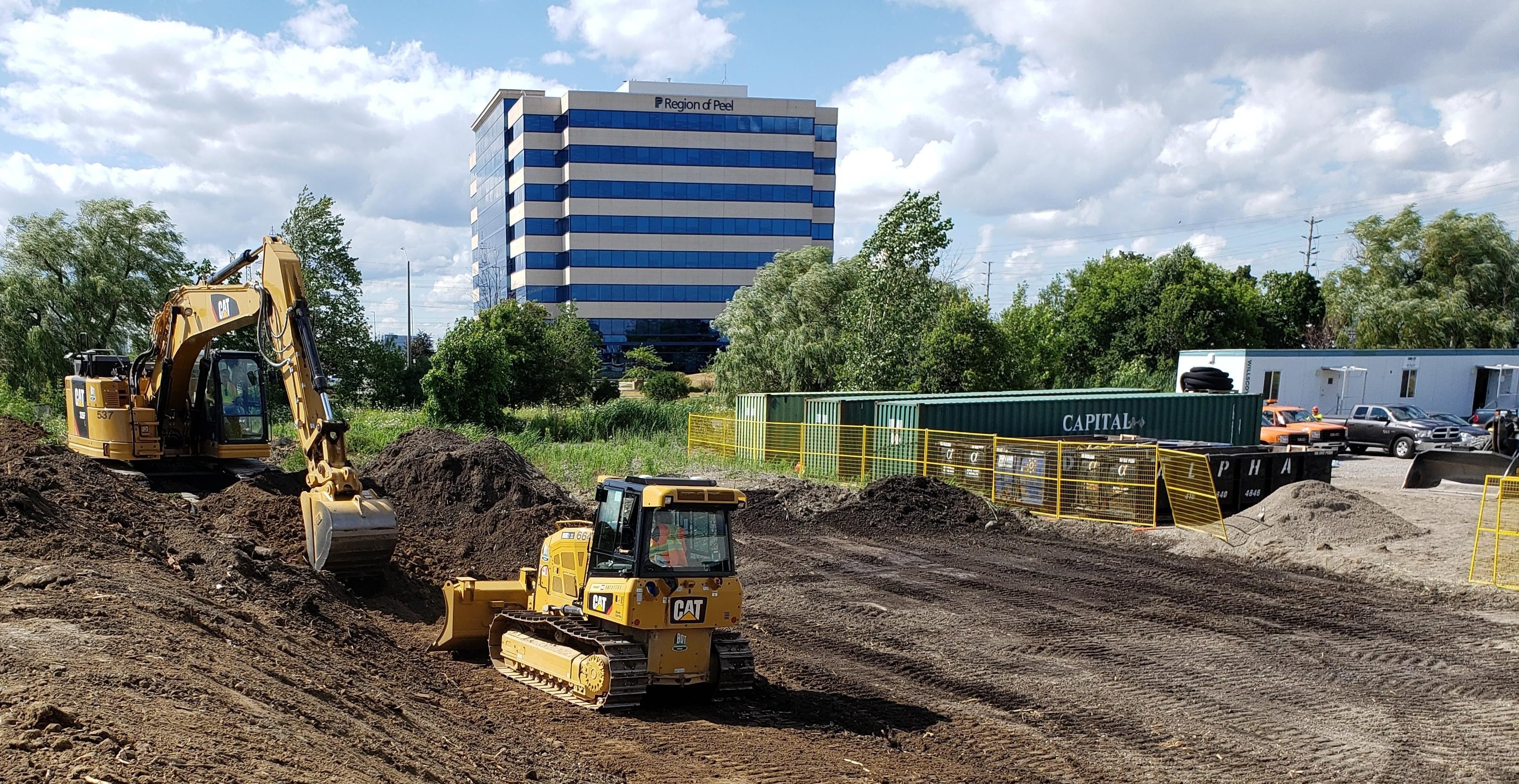How crews reduce waste during Hurontario LRT build
From hazardous goods to surplus supplies, read about how crews try to be green during construction.
Oct 22, 2020
Debris.
Waste.
Clutter and excess.
There is a lot of construction involved in building the new Hurontario LRT (HuLRT) line – but that does not have to mean there is a lot of unused material that has to gather during the process.
While you likely didn’t know this is ‘Waste Reduction Week’ in Canada, here’s a behind-the-scenes look at what the HuLRT team does to ensure project partners reduce waste as much as possible.
The first step in reducing construction waste is making sure crews only bring what is needed onsite. There is a team dedicated to calculating and projecting supplies, such as tracks, wood, electrical wiring, nails and more for the project. They will go through surplus materials on other projects before ordering new materials. When ordering supplies, the team works closely with supply partners to purchase materials with minimal or recyclable packaging and to buy back unused materials to eliminate the likelihood of supplies ending up in waste.
Machines work on an area at Derry Road and Hurontario Street. (Metrolinx photo)
While crews were preparing the roads for the HuLRT line, materials such as soil, rocks, trees, tree stumps and other excavated materials were found. If it was determined these materials cannot be used in the HuLRT project, they are inputted into SoilFlo, a software application, to see if they can be used on other projects. This program is also used to source materials for the HuLRT project. The soil being used has been sourced from the Sandalwood Park Project, and crews have accepted shale from the Parkside Village near Confederation Parkway.
Excavated material is then sorted into piles along the LRT corridor until it is time to use them.
While materials are stored, there may be a risk that loose sand, clay, silt and other particles from the soil or sediment, could get into storm drains and catch basins. This can degrade the water quality for drinking and increase the potential for flooding. Sediment tracked onto roadways from construction vehicles is managed and cleaned using street sweepers, which minimizes the sediment from being washed into municipal catch basins.
A simple but efficient barrier has been built around this drain, to divert runoff. (Metrolinx photo)
Hazardous materials also pose a risk and must be disposed of safely. Teams created a source separation program, which provides dedicated waste bins for these materials on the sites they are used, to ensure they don’t contaminate other materials onsite before they are disposed of. Ensuring the correct use, storage and disposal of hazardous materials help reduce the impact they have on the surrounding environment.
Not only will the LRT be producing near zero emissions when completed, but throughout the construction process teams are working to reduce construction waste by collaborating with other projects and effectively managing supplies and excavated materials.
Bin there – doing that. Containers sit ready to collect and recycle debris. (Metrolinx photo)
The measure of a good transit system is more than just moving people in a state-of-the-art light rail vehicle. It’s also about being smart about the creation and movement of the materials you use to build that system.
by Erika D’Urbano Communications senior advisor
